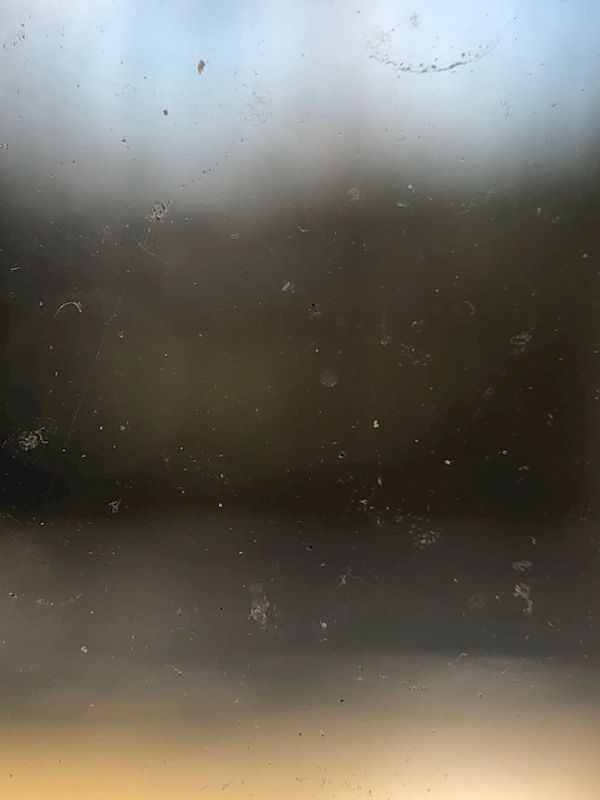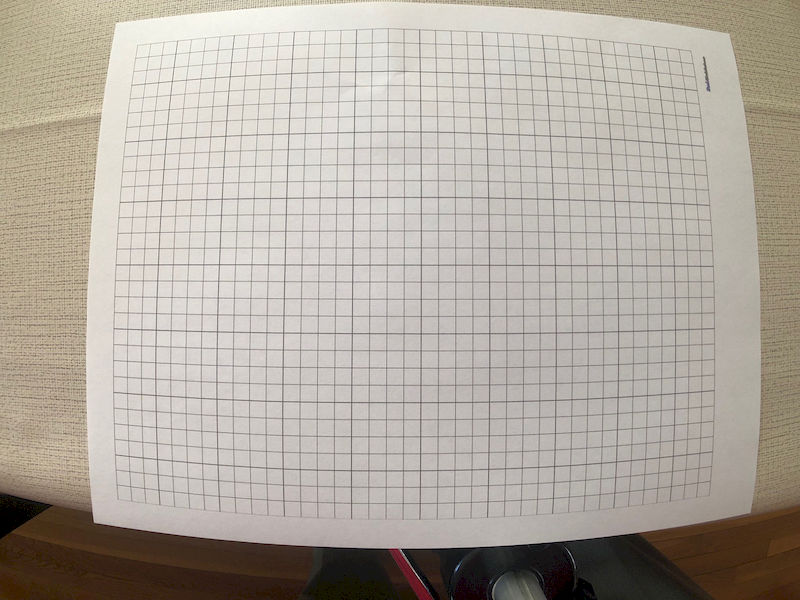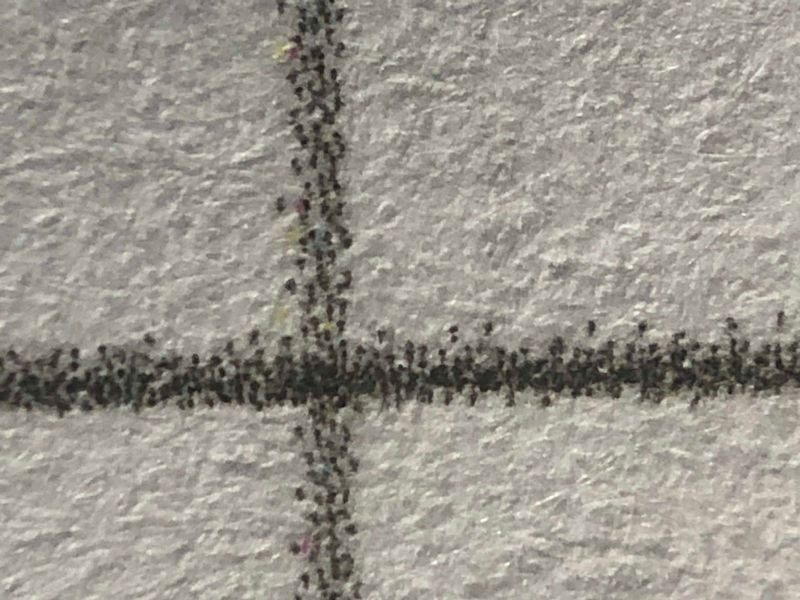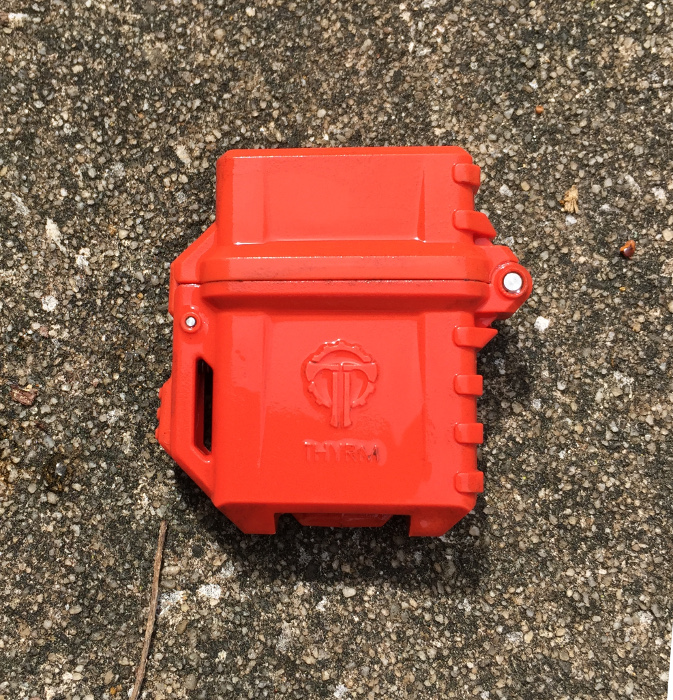
REVIEW – The Thyrm PyroVault Lighter Armor does what it says on the tin. The PyroVault is a rugged housing that accepts most Zippo-style inserts (either liquid fuel or butane).
What is it?
The Thyrm PryoVault is a ruggedized weather-resistant case for liquid and butane fueled Zippo®-compatible lighter inserts.
What’s in the box?
The PyroVault comes attached to a thick paper hang card which describes the features of the PyroVault. The PyroVault’s clip is slipped through two cutouts in the card and is secured with a small plastic zip tie. Cutting the tie and sliding the clip out of the card frees the PyroVault. Thank you, Thyrm, for simple, but effective packaging. The PyroVault is sold as just a shell to which you add your favorite Zippo-compatible lighter insert.
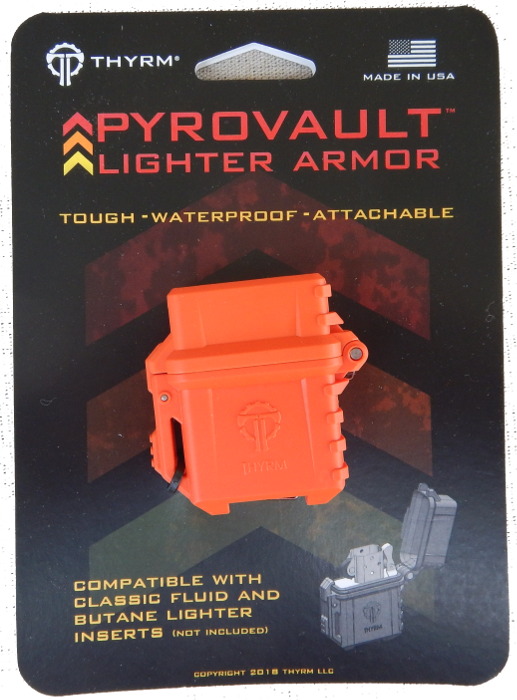

The Thyrm PyroVault is available in rescue (orange), urban gray, black, olive drab (green), and flat dark earth (dark tan). I received the rescue (orange) versions of the PyroVault to test.
Hardware specs
- Height: 2.9″
- Width: 2.2″
- Thickness: 0.9″
- Weight: 0.56 oz
Design and features
The PyroVault is constructed from rugged, heat-resistant, reinforced polymer with a rubberized gasket seal. The seal works to keep dirt and moisture out of the lighter mechanism, while simultaneously reducing the evaporation of liquid fuel from the lighter. The design includes a spring-loaded cap which is secured with an easy open latch. To help you keep track of your lighter, the Pyrovault includes both a lanyard loop in the latch housing and a MOLLE-compatible clip on the back side of the housing. While the housing does have a gasket to help seal the case, the PyroVault is not rated for prolonged submersion.
I tested the PyroVault with two different lighter inserts. A Zippo brand insert from my 30-year old brass Zippo lighter which uses standard lighter fluid and a new Z plus! 2.0 twin torch flame lighter insert from The LOTUS Group which is butane powered. I will not be reviewing the Z plus! as part of this review, it is merely being used an example of a compatible butane-fueled insert.
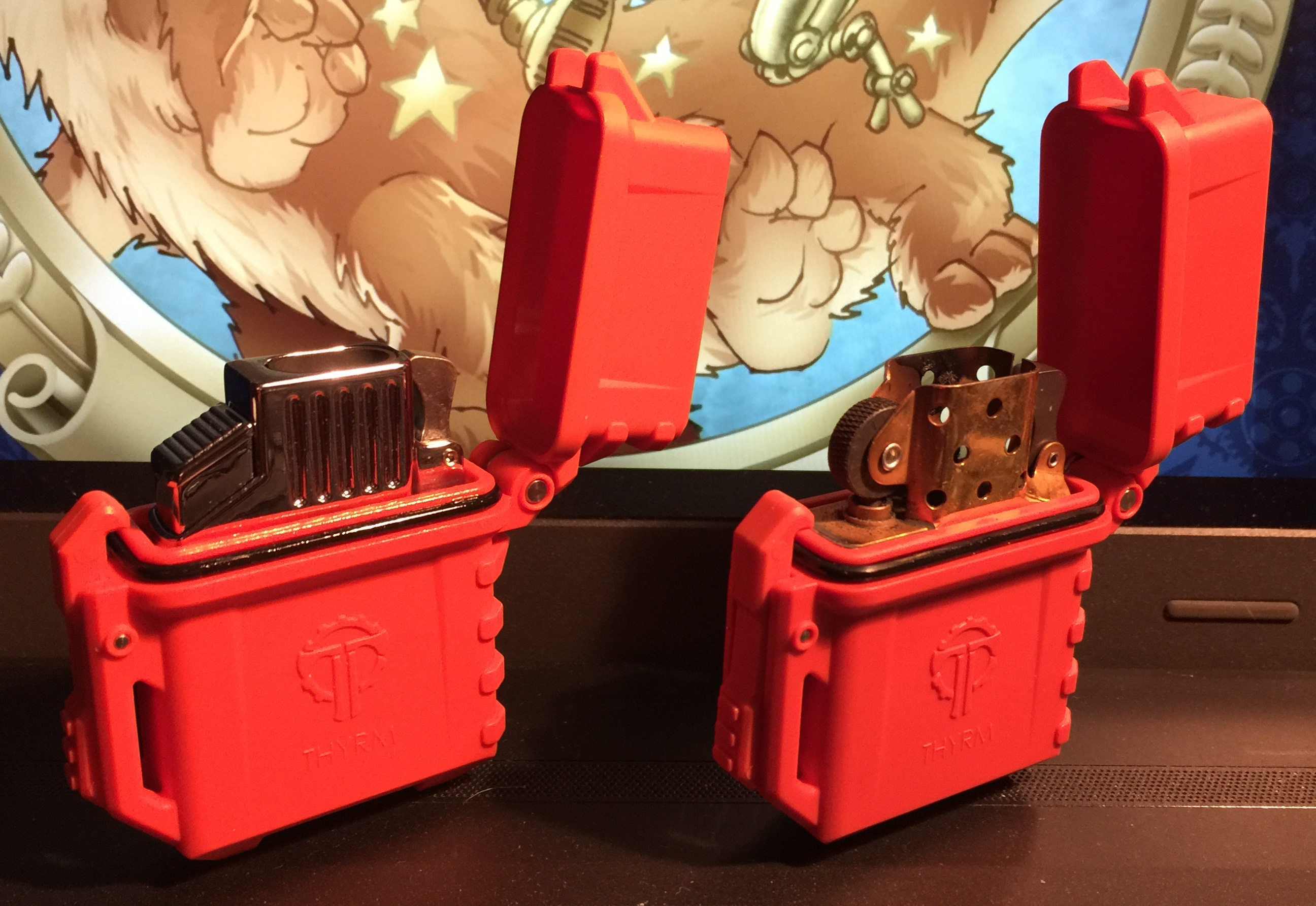
The PyroVault is about half the weight of an empty Zippo-brand case, but is slightly larger in all physical dimensions.
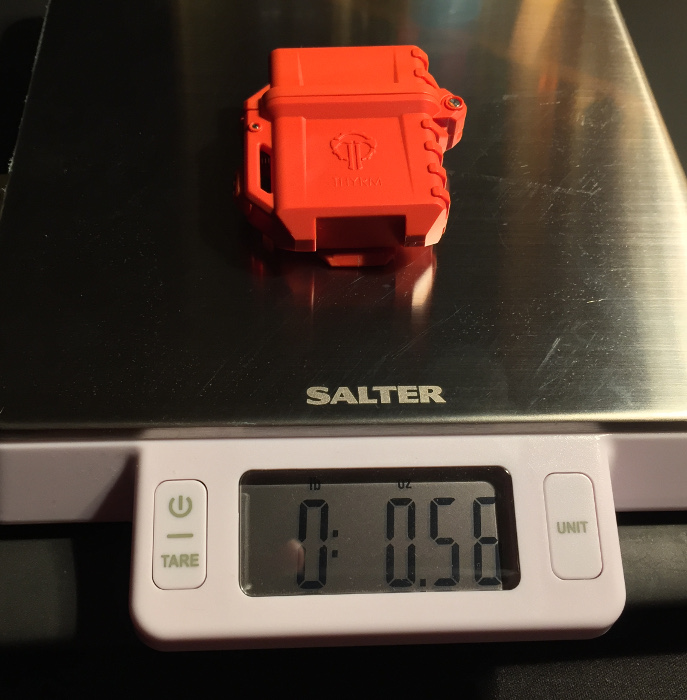

Elements resistance test
As the PyroVault is advertised as a weather and dirt resistant lighter case, I decided to test the PyroVault in submersion and “shake and bake” particulate tests. Although it is not rated for submersion, I decided to use a submersion test, rather than showering with the lighter (believe me, no one wants to see those test photos), as a worst-case-scenario test modeling falling out of a canoe or being caught in a rainstorm (both of which have happened to me causing my lighter to fail to work when needed). In the submersion test, a PyroVault was tied to a paving brick using the lanyard hole–for those who track such thing, the line was attached to the lighter with a bowline and secured to the brick with a two half-hitch–and suspended in a water bath at a depth of 4.75 inches to the top of the case for 30 minutes. I decided to use the lanyard hole to secure the PyroVault, so no mechanical stress other than water pressure would be placed on the gasket and case / lid joint. Ignore the bubbles in the photograph, those are from the paving brick.

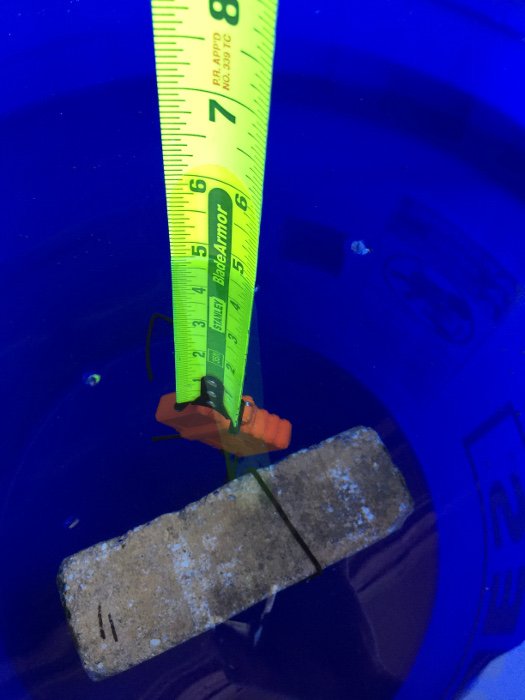
Before dunking the case, I placed a small piece of absorbent material inside the case and made sure that the material was pressed up against the inside of the case. After 30 minutes, there was a small amount of moisture on the absorbent material. Although the PyroVault isn’t rated for submersion, it performed well, and the amount of moisture on the test material would not be enough to stop either of the inserts from functioning.
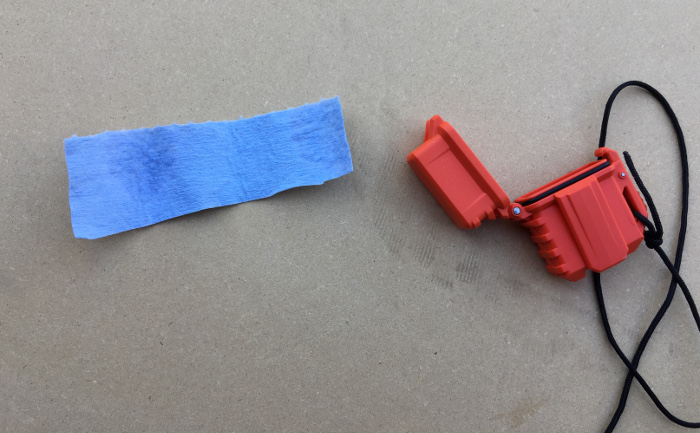
In the “shake and bake” test, I filled a plastic bag (an actual bag from a oven-fried chicken coating kit) with slightly moist sandy loam (and a few weeds) from my yard and dropped a PyroVault into the bag–I was spared having find a shovel by one of our neighborhood armadillos, who had been rooting for a meal the night before and had left a decent sized pile of loam piled up next to his dining spot.
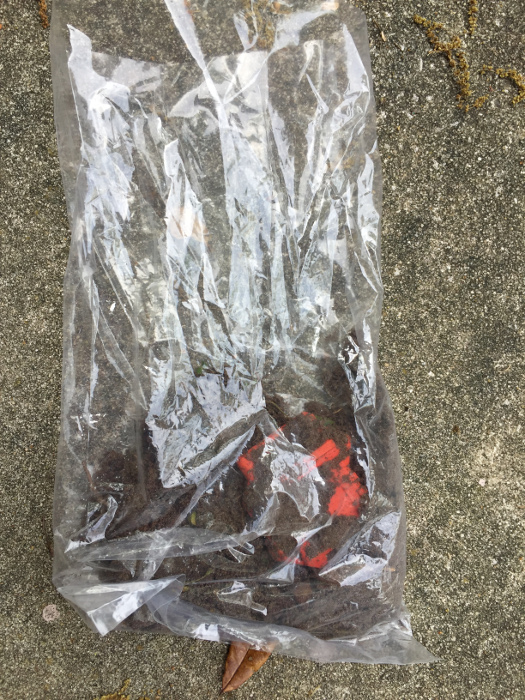
I shook the bag for 2 minutes and then massaged the loam around the PyroVault for a further 2 minutes. At the end of this abuse, the case was quite dirty.

I rinsed the PyroVault off with low-pressure running water from a garden hose.
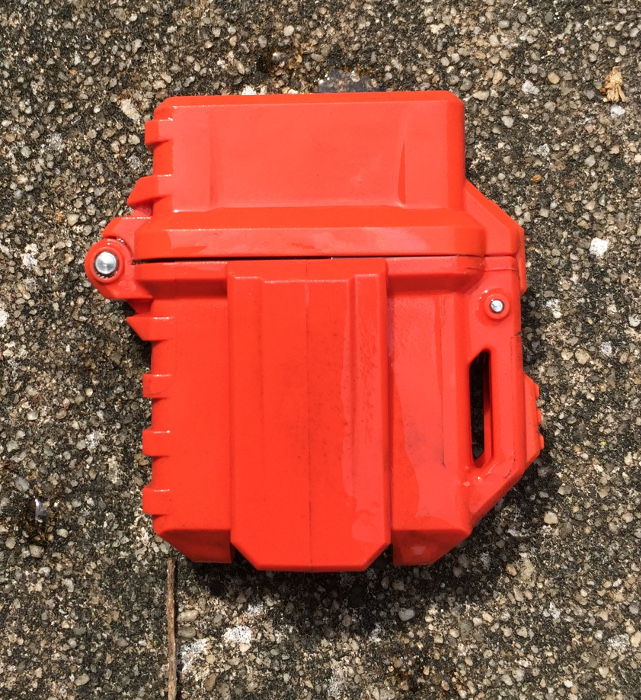

The results of this test were that no particulates entered the interior of the case, but grinding could be heard in the hinge when opening and closing the case. This was remedied by a generous dose of Tuf-Glide dry lubricant and cycling the hinge 20 or 30 times.
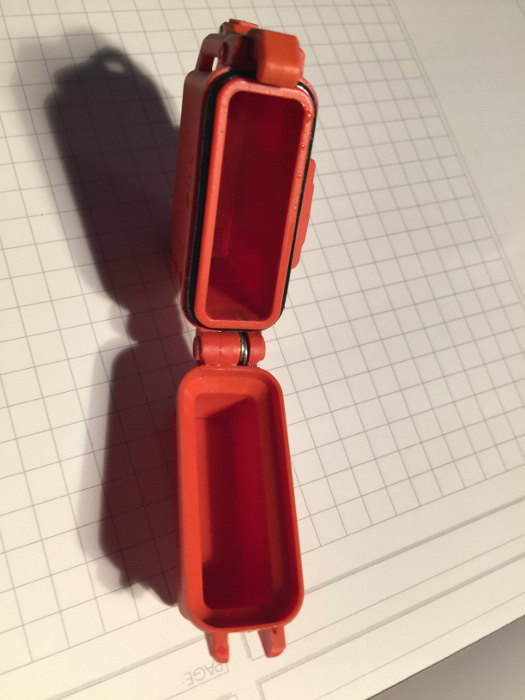
Lighter fluid evaporation test
Another of the Thyrm’s claims about the PyroVault is that it reduces evaporation of lighter fluid from the insert. My informal testing showed that my lighter still had sufficient lighter fluid after 12 days to function reliably. Historically, my old-school Zippo needs to be refilled after seven or eight days. Both of these tests were done using exactly the same lighter insert.
Performance
The PyroVault has survived two weeks of daily carry in either my trousers, shirt, or jacket pocket and a weekend of outdoor carry hooked to the MOLLE webbing on the outside of my backpack. I never had a problem with getting either of the inserts to light during this time. However, after about 6 or 7 uses of the traditional fuel insert in the PyroVault, I found that the case became slow to open when I released the latch, and the lid was not swinging open as far as it first did. I do not know if this was due to the insert pressing on the sides of the case (my Zippo insert is slightly wider than the butane insert and takes some effort to insert into the PyroVault), some sort of deformation due to the lid experiencing heating and cooling cycles when extinguishing the flame, or just wear-and-tear. The case always opened, but it was just delayed. I attempted to ameliorate this by re-lubricating the hinge and applying some o-ring lubricant (from a scuba shop) to the gasket. This did help but did not eliminate the problem.
A persistent annoyance was that after a week or so of routine use with the butane insert, the lid on the case stopped opening to its fullest extent with just the hinge spring driving the movement. The use of Tuf-Glide as in the two aforementioned scenarios helped with this problem. The next generation of the PyroVault may benefit from a stronger hinge spring.
What I like
- Water and dirt / dust resistance
- Ease of use
- Light weight
- MOLLE clip
- Helps keep lighter fluid in the lighter
What needs to be improved
- Not so much an improvement as something that I miss: the trademark “click” of a Zippo lighter opening and closing
- It would be nice if the spring opened the lid a bit further. I noticed that when the butane insert is on maximum flame that the ends of the flames are precariously close the the lip of the lid if I haven’t manually pushed the lid open all the way. Perhaps a stronger spring would solve this problem.
- The latch is slightly in the way of operating the striker wheel when using the liquid fuel insert.
- The rubber gasket that seals the PyroVault sometimes causes the lid to stick. This seems to happen with the official Zippo lighter insert after sitting closed overnight
Final thoughts
I found that I liked using the PyroVault with a butane insert more than using a traditional insert. Several factors influenced this opinion. First the overhang of the latch which requires you to raise your thumb up and over before using the striker wheel. This interferes with my muscle memory from 30 years of using a traditional Zippo lighter. Second, the flame seems to heat up the lid a bit more than I would like when extinguishing the flame from the traditional insert. I also notice this heating with my metal Zippo lighter, but I don’t worry about it as much with the metal. Third, I miss the classic Zippo lighter sound (this is something for which I have great nostalgia as my grandfather’s lighter of choice was a Zippo, and a Zippo has been my utility lighter of choice for 3 decades). When I know that I’m carrying a butane lighter, I don’t seem to mind the silent operation, but my brain just expects the case spring click when using a liquid fuel lighter.
I have added a PyroVault to my EDC kit and my camping gear. I will also be purchasing additional PyroVaults and inserts as gifts this holiday season for friends and family.
Price: $ 19.99
Where to buy: Thyrm online store and Amazon
Source: The samples of this product were provided by Thyrm LLC.
Filed in categories: Reviews
Tagged: Cases and Covers, EDC
Thyrm PyroVault Lighter Armor review originally appeared on The Gadgeteer on March 25, 2019 at 10:05 am.
Note: If you are subscribed to this feed through FeedBurner, please switch to our native feed URL http://the-gadgeteer.com/feed/ in order to ensure continuous delivery.
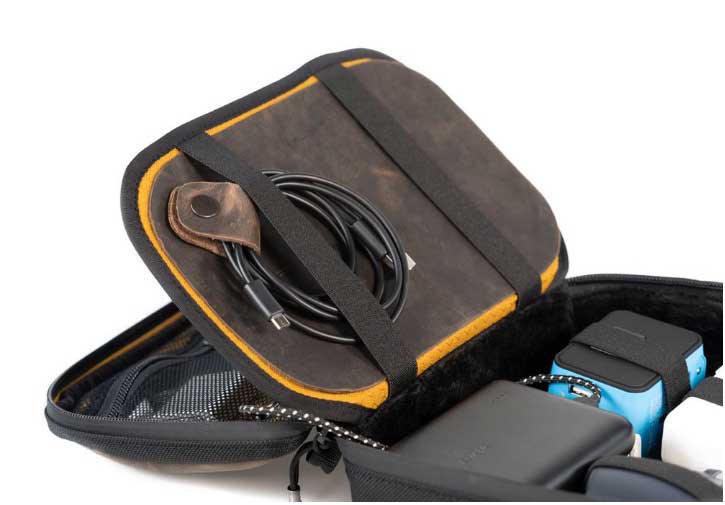
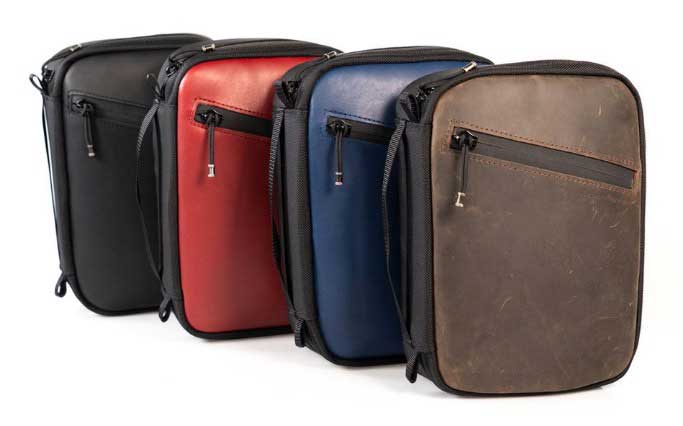

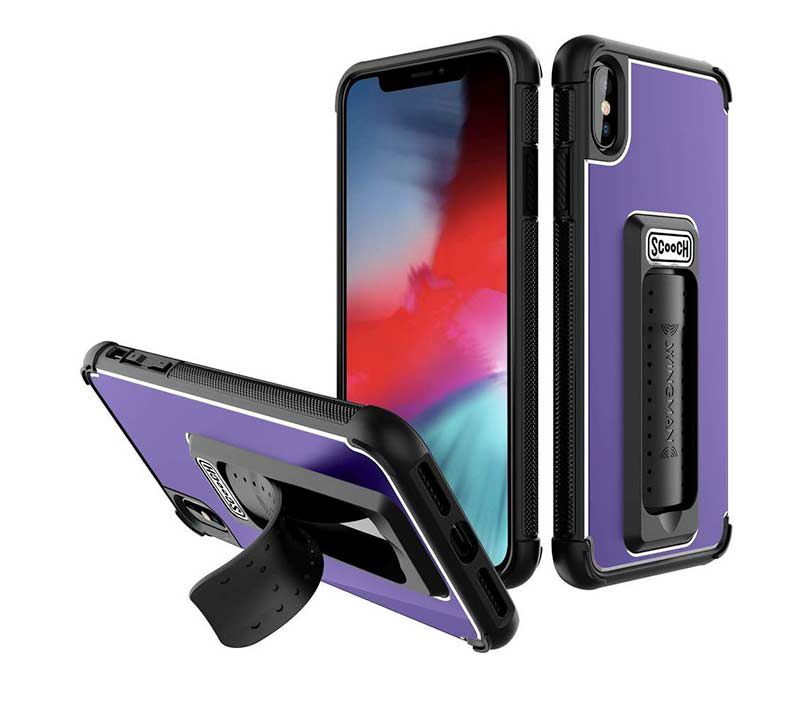
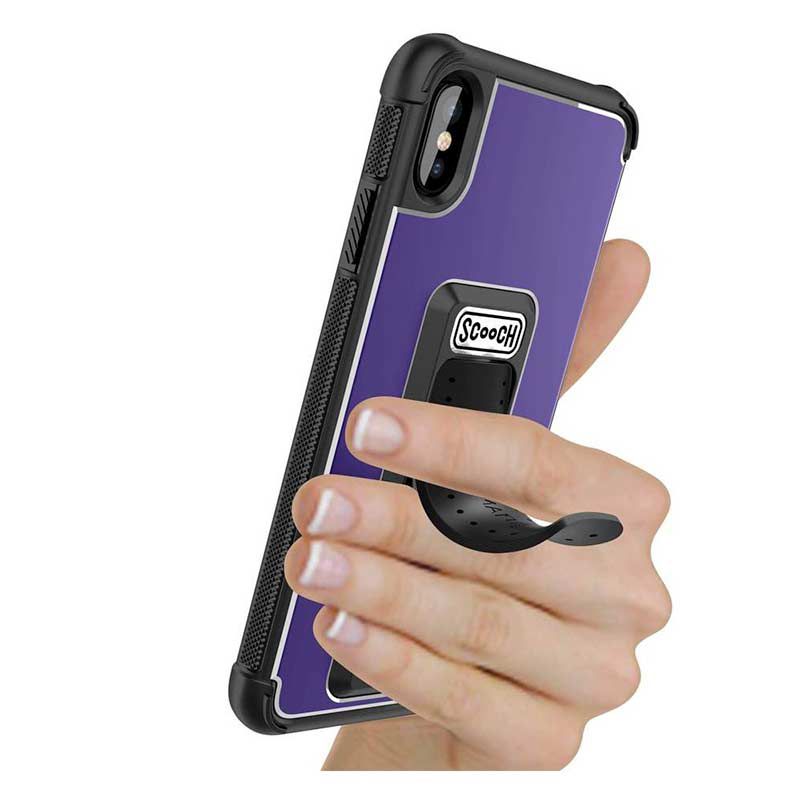
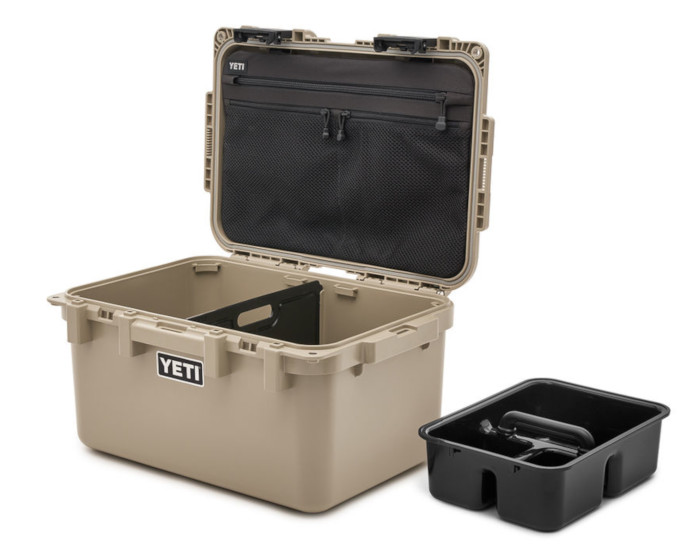
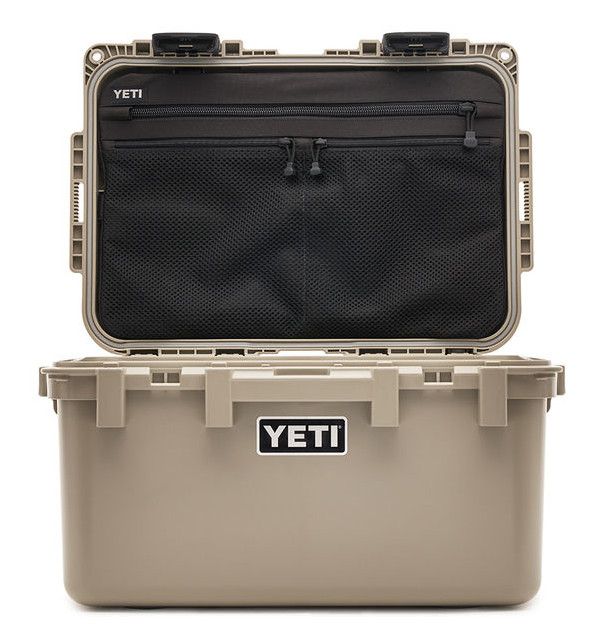
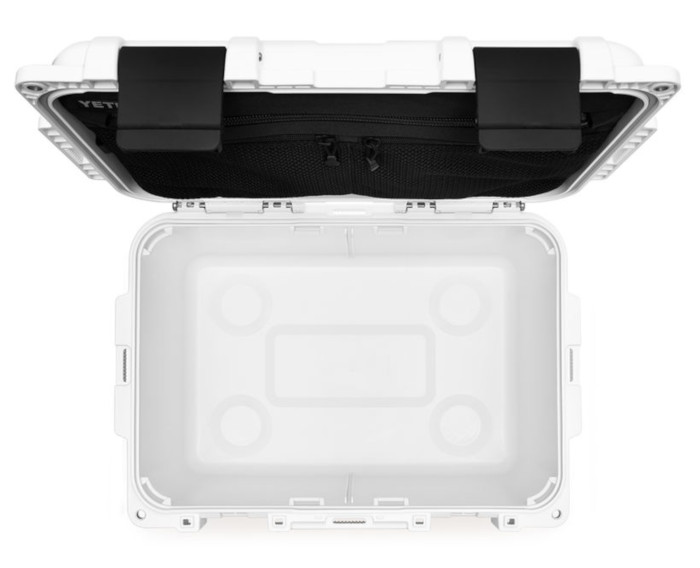
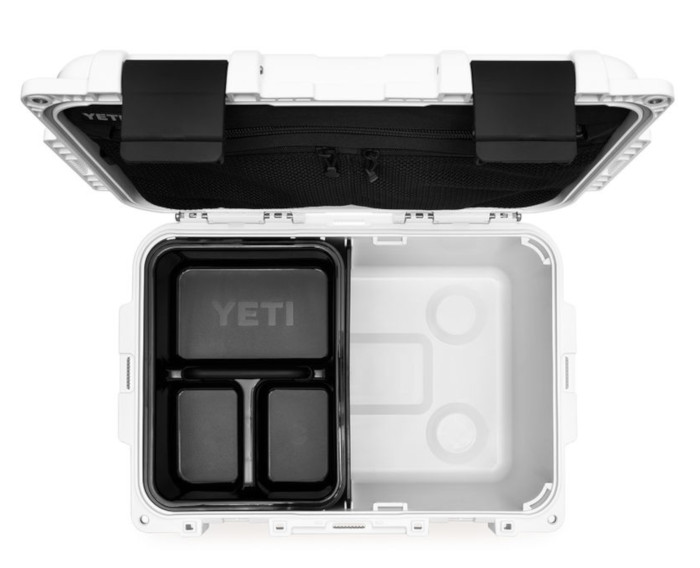
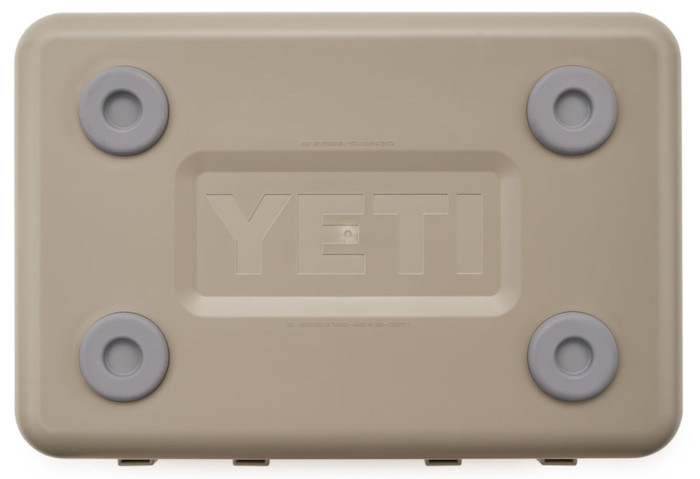
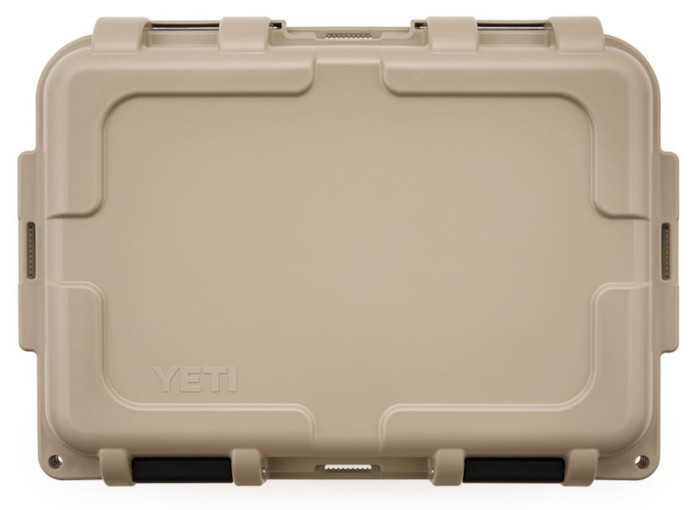
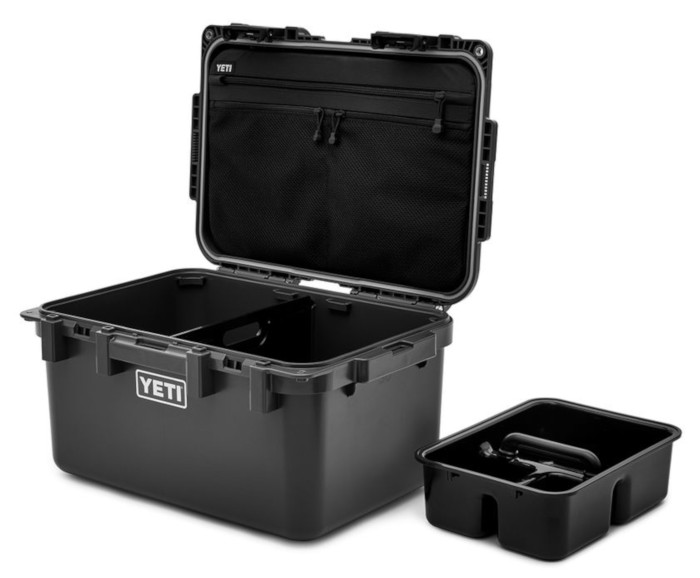













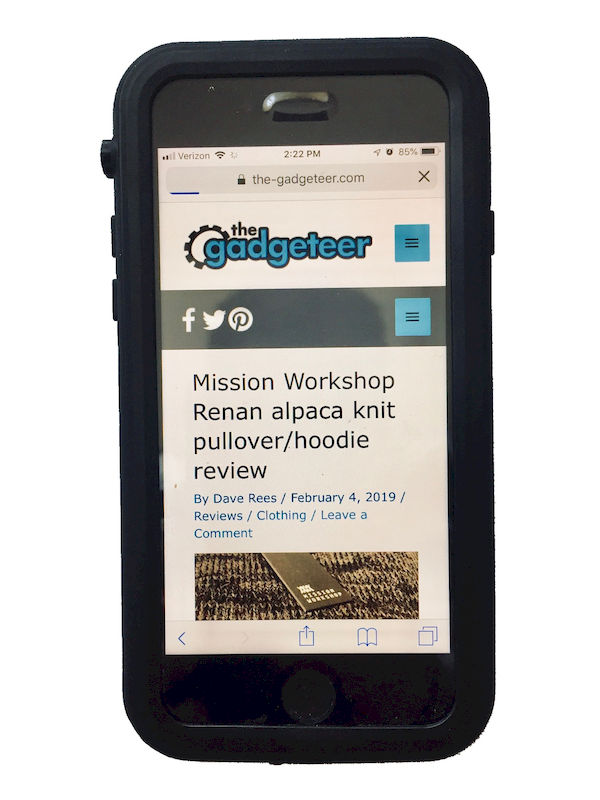 REVIEW – Advances in technology and increased memory capacity means more people carry iPhones that are expensive to replace and that contain invaluable content. The Hitcase is a low-profile case that is compatible with magnetically mounted TrueLUX lenses, and provides protection from water and drops. Read on to see what I think!
REVIEW – Advances in technology and increased memory capacity means more people carry iPhones that are expensive to replace and that contain invaluable content. The Hitcase is a low-profile case that is compatible with magnetically mounted TrueLUX lenses, and provides protection from water and drops. Read on to see what I think!
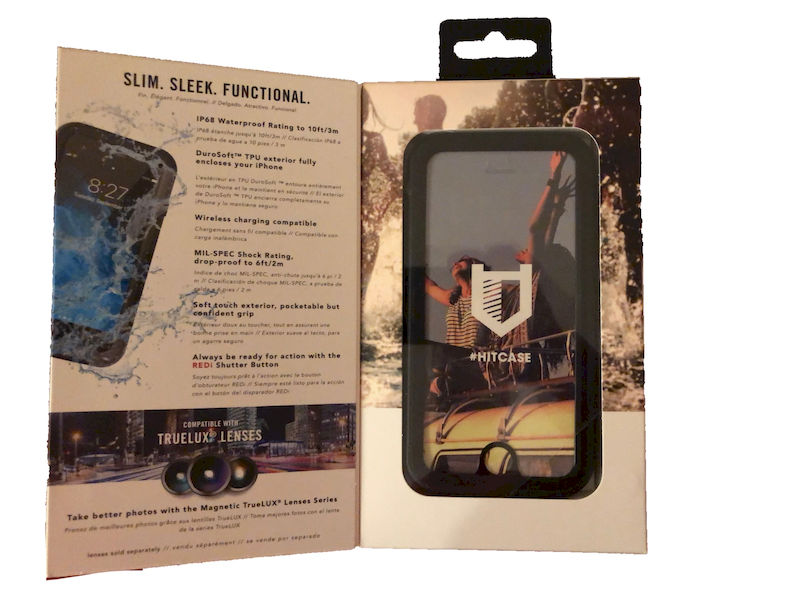
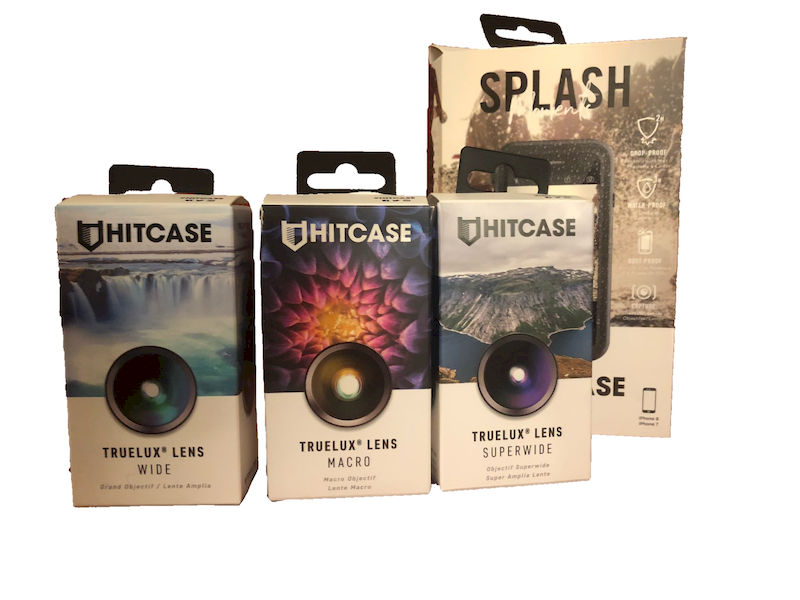
 TPU exterior
TPU exterior

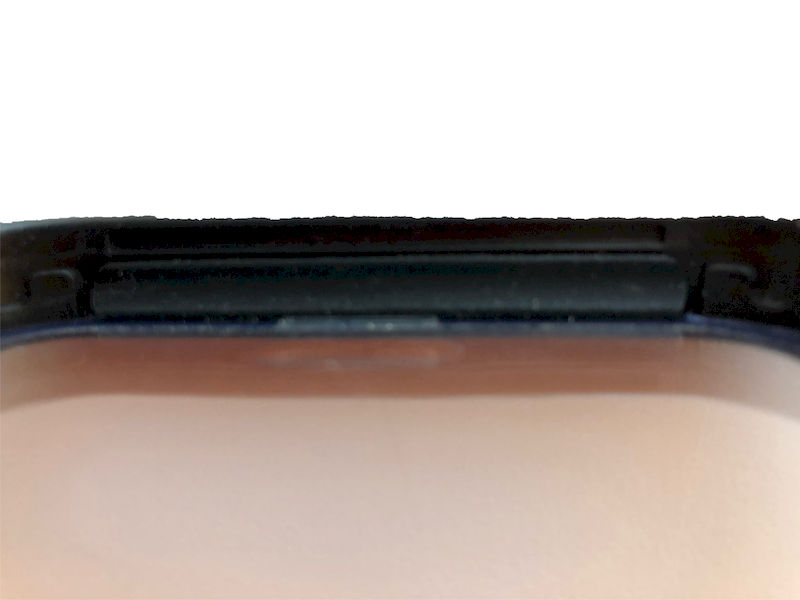
 They show up on the phone in bright light, but not while the screen has an image on it. The screen doesn’t look completely flat because it is a plastic film. Perhaps at the dawn of the age of the folding phone, we should get used to a plastic film screen. (How are cases going to work on these folding phones anyhow?)
They show up on the phone in bright light, but not while the screen has an image on it. The screen doesn’t look completely flat because it is a plastic film. Perhaps at the dawn of the age of the folding phone, we should get used to a plastic film screen. (How are cases going to work on these folding phones anyhow?)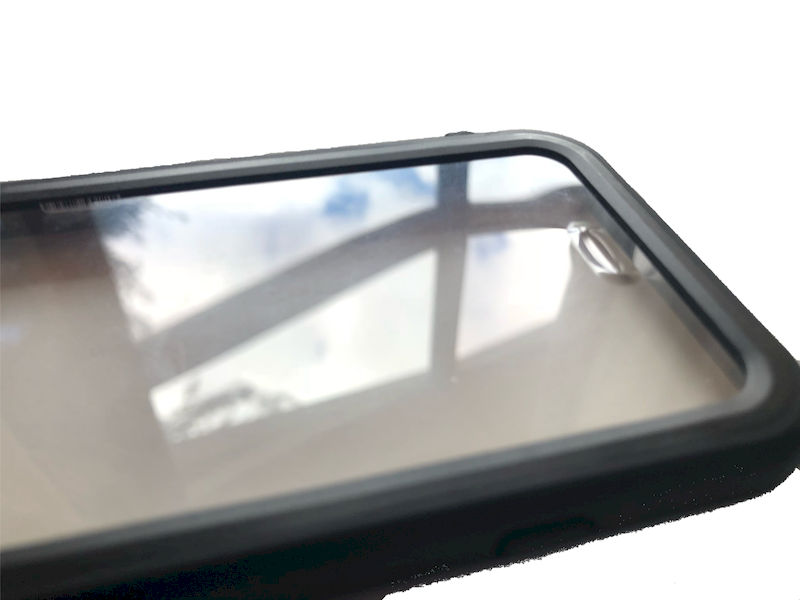


 When using the macro lens the only thing I could tell is that my windows need cleaning.
When using the macro lens the only thing I could tell is that my windows need cleaning.